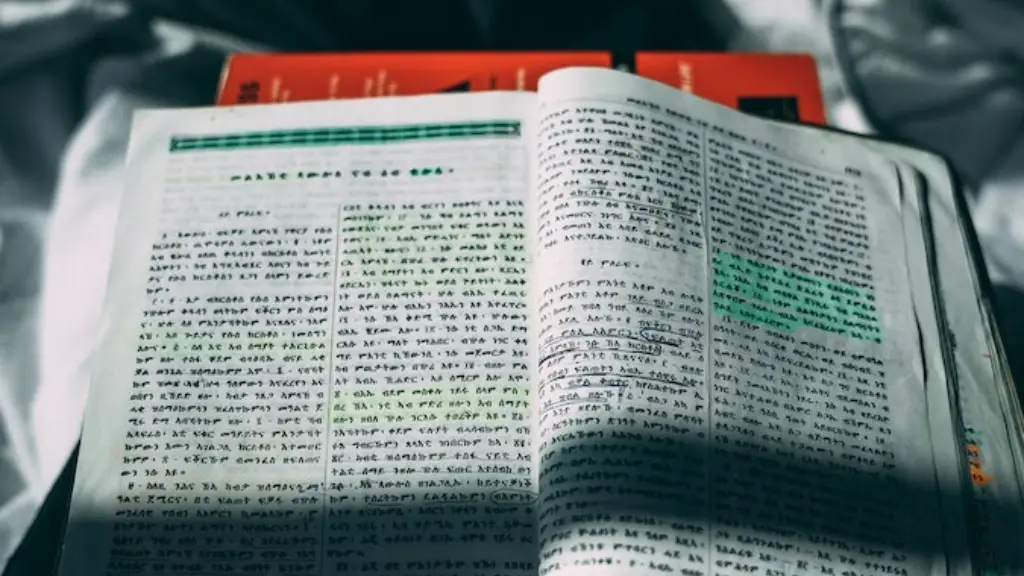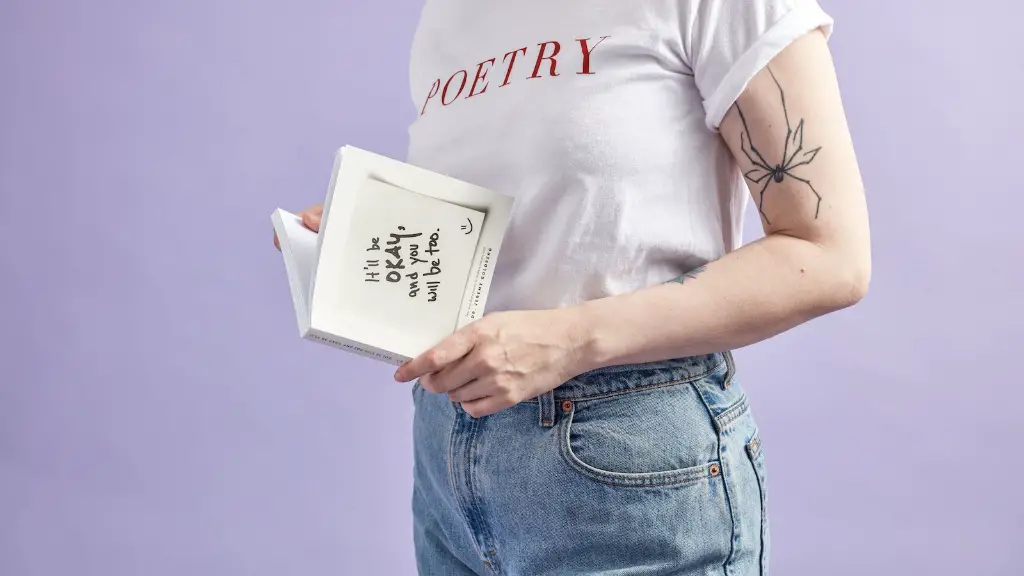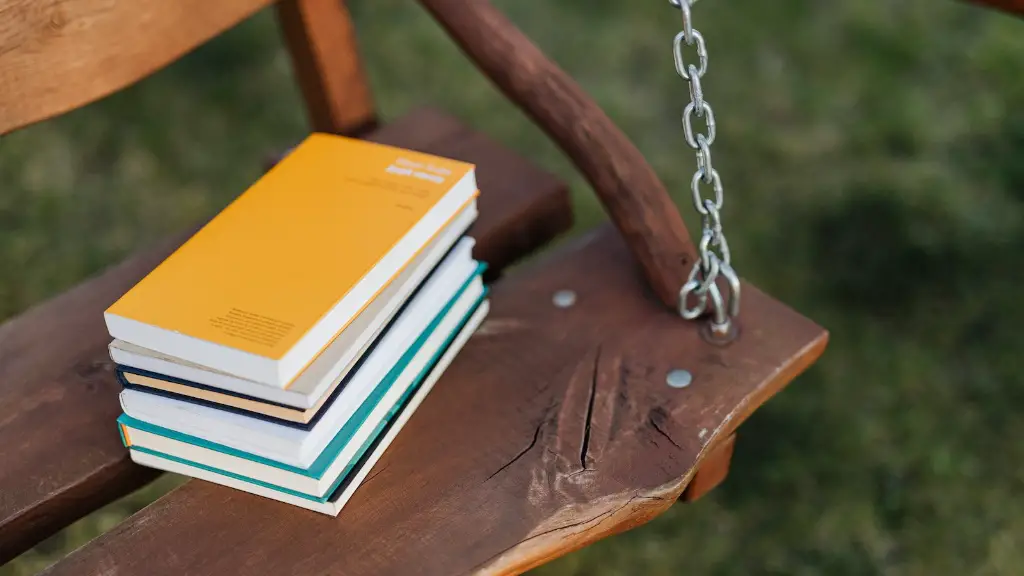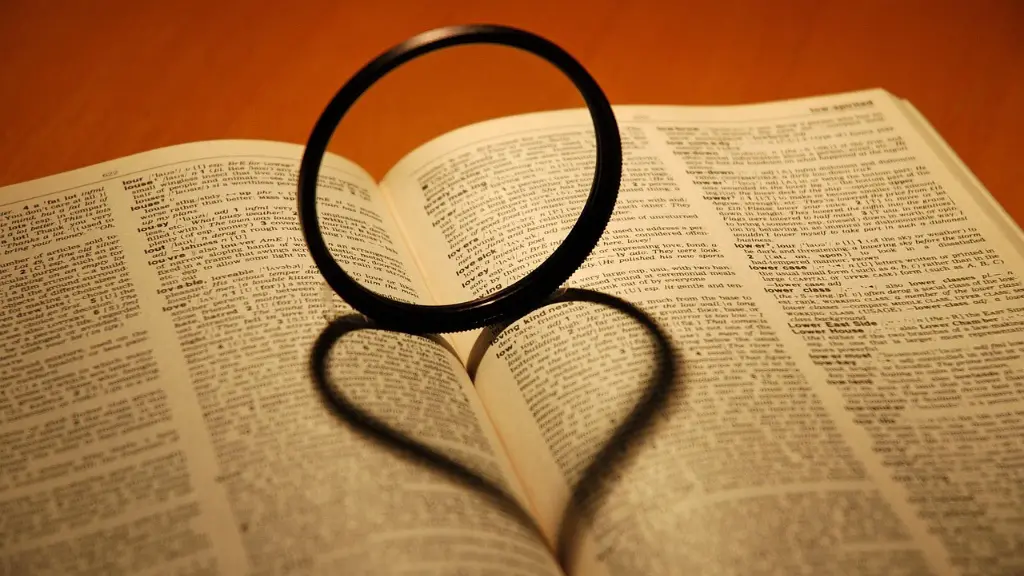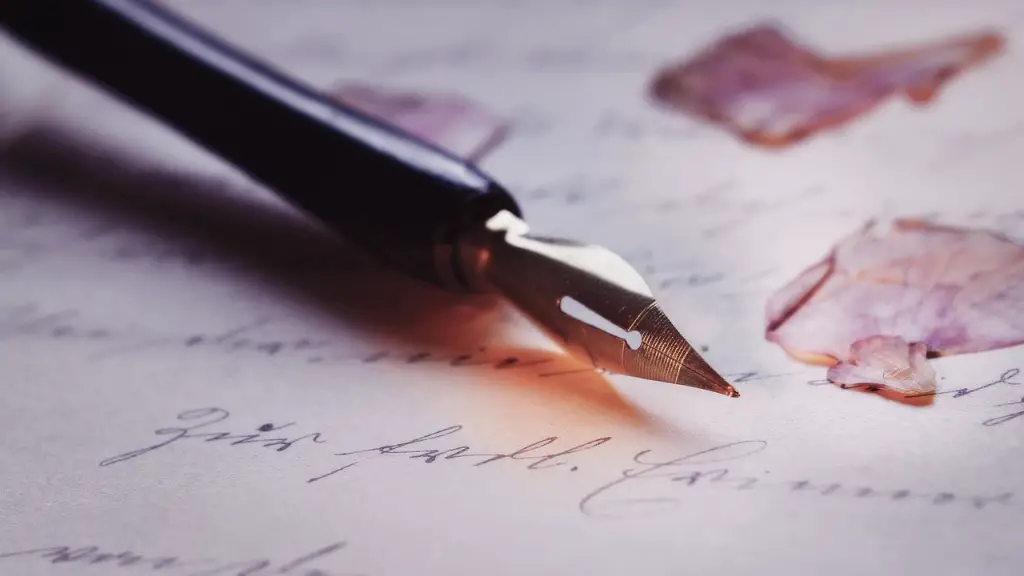Poetry is a unique style of writing, an art form that combines words and imagery to create an effect on its readers. It is often used to express emotions, opinions and thoughts in a creative, artistic way. One of the most important elements of poetry is the form of the poem. A form in poetry is a way a poem is structured to create a certain effect that can be felt by the reader.
The form of a poem usually includes the poet’s choice of stanzas, rhyme, rhythm and line length. All of these elements combine to create a feeling or emotion that the reader experiences while they are reading the poem. This can be as simple as a sense of happiness, sorrow, or even confusion. The form is an important part of the poem and can help add depth to the poem’s meaning.
In terms of rhyme, there are many different types of rhyme that can be used in poems. The most common are end rhyme, internal rhyme, and slant rhyme. End rhyme, the most common type, is when the last word of each line rhymes. Internal rhyme is when the last word of a line rhymes with a word in the middle of a line. Slant rhyme is when two words partially rhyme, such as “halo” and “below.” Rhyme can help to add structure to the poem, and can also add an extra layer of meaning as certain types of rhyme can be used to create a specific feeling or emotion in the reader.
The rhythm of the poem is typically created by the use of stressed and unstressed syllables in the poetry. For example, a poem may have a repeating pattern of two unstressed syllables followed by a stressed syllable. This type of rhythm is known as iambic pentameter and is commonly used in English poetry. The rhythm of a poem is important, as it can help to create a specific feeling or emotion in the reader. A poem with a strong, consistent rhythm can create a soothing or calming feeling for the reader, while a poem with an erratic, unsteady rhythm can evoke a sense of unease.
Line length is also an important element of a poem’s form. Longer lines can create a feeling of expansiveness, while shorter lines can help to create a sense of intimacy. The length of a line can also affect the way a poem looks on the page, making it aesthetically pleasing or unappealing depending on the poet’s tastes.
Ultimately, the form of a poem can be used to create a certain feeling or emotion in the reader. The poet can use elements such as rhyme, rhythm, and line length to create a certain effect in the reader. By carefully crafting the form of the poem, the poet can create a piece of art that speaks to the reader and evokes emotion.
Stanza
The stanza is an important element of a poem’s form and often helps to structure the poem. A stanza is traditionally a group of lines within a poem that have a common theme, meter, and rhyme scheme. These stanzas are used to group lines that have similar ideas or themes together. For example, a poem may have two or three stanzas that focus on the same idea, or a single stanza that outlines several related ideas. Stanzas can also be used to signify a change in tone or perspective in the poem.
The number of lines in a stanza can vary, with the most common stanza forms being the quatrain, tercet and couplet. The quatrain consists of four lines, while the tercet and couplet consist of three and two lines, respectively. These different stanza lengths can be used to create a certain effect in the reader. For example, a quatrain may be used to present an idea with more detail, while a couplet may be used to add emphasis to a certain point.
One of the most popular forms of poetry is the haiku, a type of Japanese poem consisting of three lines and containing a total of seventeen syllables. This type of poem has very specific rules, with the first and third lines containing five syllables each, and the second line containing seven syllables. The structure of the haiku helps to create a specific feeling in the reader, as it typically describes an image or scene in nature in simple yet evocative language.
Verse
Verse is a type of poetry that typically has a specific meter and rhyme scheme. Meter is the pattern of stressed and unstressed syllables in a line of poetry, and is usually indicated by the use of certain syllabic patterns, such as iambic pentameter. Rhyme schemes are designated by letters, such as ABAB or ABCB. Verse poetry has a consistent meter and rhymes throughout the poem, creating a structured and consistent feel. This can be used to create a sense of order or structure in the poem, and can be used to emphasize certain ideas or themes.
Verse poetry can be further divided into two main forms: blank verse and free verse. Blank verse is a type of poetry written in unrhymed iambic pentameter. This type of poetry has a consistent meter, but does not have any rhyme. This can be used to create a gentle, natural feeling, as the words flow more easily than in rhymed poetry. Free verse is a type of poetry written with an irregular meter and no rhyme. This type of poetry usually follows no specific pattern or structure, allowing the poet to express their ideas more freely.
Verse can be used to create a specific feeling in the reader, as well as help to emphasize important ideas or themes in the poem. By carefully crafting the meter and rhyme scheme of a poem, the poet can create a poem that speaks to its readers in a meaningful and powerful way.
Explicit Form
Explicit form is a type of poetry that follows a strict form or structure. This type of poetry is often characterized by its use of certain repeating patterns in the poem, such as a certain rhyme scheme or meter. Examples of explicit forms include sonnets, villanelles, and sestinas, all of which have very specific rules and structures to follow.
Explicit forms can be used to create a certain effect in the reader, as they follow a strict pattern and structure that must be followed in order for the poem to remain in the form. For example, a sonnet is typically written in iambic pentameter, with a specific rhyme scheme and punctuation. This structure helps to create a certain feeling in the reader, as all of the elements of the poem come together to create a unified work.
Explicit forms can be difficult to write, as the poet must adhere strictly to the form in order to create an effective and meaningful poem. However, by carefully understanding the form and crafting the poem in such a way that all of the elements come together in harmony, the poet can create a powerful and meaningful poem.
Implicit Form
Implicit form is a type of poetry that does not follow a strict form or structure. This type of poetry is often characterized by its use of free association, meaning that the poet’s thoughts and ideas can roam without restriction. This form of poetry is often seen as a form of self-expression and can be used to explore the poet’s inner thoughts and feelings.
Implicit form can be used to create a certain effect in the reader, as the lack of structure allows the poem to take on an almost stream-of-consciousness quality. In this type of poem, the poet’s thoughts can wander freely and the poem takes on a meandering quality. This type of poem can be used to explore the poet’s inner thoughts and feelings, as well as to express their opinions on certain topics.
While implicit form poems do not follow a strict structure, this does not mean that they are not meaningful works of art. Implicit form can be used to express the poet’s emotions and opinions, as well as explore themes and ideas in an insightful and creative way. The lack of structure can be used to create a unique and powerful effect on the reader.
Examples
To get a better understanding of the different elements of form in a poem, it is helpful to look at some examples. One of the most famous examples of a poem using end rhyme is William Shakespeare’s “Sonnet 18”, which uses a simple rhyme scheme of ABAB. This rhyme scheme helps to unify the poem and gives it a pleasing rhythm that can be felt by the reader. Another example of a poem using end rhyme is Robert Frost’s “Stopping by Woods on a Snowy Evening”, which follows an ABCB rhyme scheme. The use of this rhyme scheme helps create a feeling of order and structure in the poem, as each line rhymes with the line before it.
A famous example of a poem written in iambic pentameter is William Wordsworth’s “Daffodils”, which uses regular iambic tetrameter to evoke a sense of peacefulness and tranquility. This type of rhythm helps to create a soothing feeling for the reader, as the poem follows a gentle, steady rhythm. Poems written in free verse are also a great example of poetry using form. An example of this can be seen in Walt Whitman’s “Song of Myself”, which has no specific rhyme or meter but still manages to evoke a powerful emotion in the reader.
Examples of explicit form can be seen in the works of many famous poets, including William Shakespeare’s sonnets and Emily Dickinson’s villanelles. These poems use specific forms and structures to create a certain effect in the reader. Examples of implicit form include Walt Whitman’s “Leaves of Grass” and e.e. cummings’ “The Cambridge Ladies Who Live in Furnished Souls”. These poems do not follow a strict structure, but still manage to evoke a feeling in the reader. These poems show that form in poetry can be used to create a powerful effect regardless of whether it is implicit or explicit.
